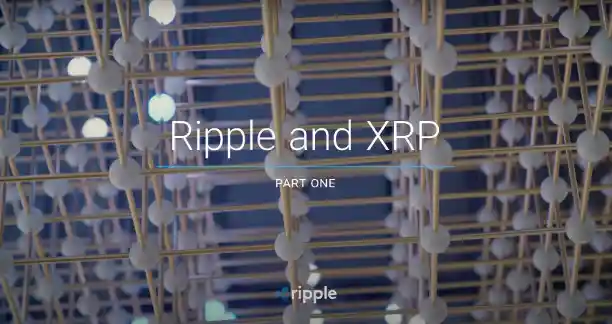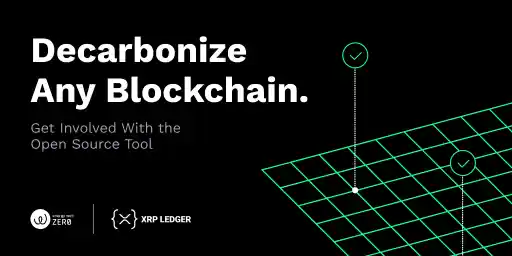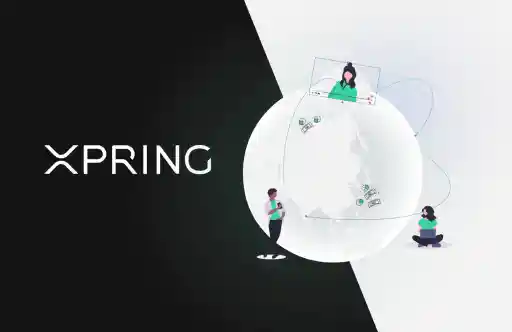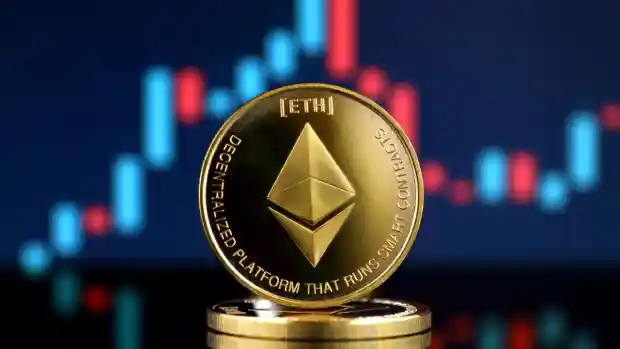18 min to read.
What is Ripple XRP
What does Ripple actually do? Is XRP a good investment? How is Ripple different than Bitcoin?

What is Ripple XRP
Ripple is one of the most common cryptocurrencies (ranks 3rd in terms of capitalization in August 2021). Despite the controversy surrounding it, the project still has a lot of followers. And this is easily explained. The project is not similar to other digital coins either in technology or in concept. An overview of the XRP cryptocurrency will help you understand the intricacies of the coin and find out its purpose. Based on this, it will be easier to evaluate the pros and cons, to understand the feasibility of investing in a coin.
History of XRP
In early 2011, 3 developers David Schwartz, Jed McCaleb and Arthur Britto got into bitcoin but noticed that mining was wasteful. They tried to create a sustainable value transfer system. Their first observations about the high power consumption and scalability issues that would plague Bitcoin proved to be accurate. In 2019, Ripple estimates that BTC mining consumed more energy resources than the whole of Portugal. Initial findings indicated that there would be problems if miners colluded to get more than 50% of the power. This risk remains for Bitcoin or Ethereum. Even in 2021, the problem is present, as mining power has been consolidated in China (until May 2021).
A trio of developers put in the effort to create a distributed ledger that would bypass these fundamental limitations of Bitcoin. Initially, the code was called Ripple. The registry included the XRP cryptocurrency to follow the same naming convention as Bitcoin. At first, the name meant an open source project, a consensus ledger, a transaction protocol, a network, and a digital asset. As a result, the name Ripple became widespread. For clarity, the community began to refer to the coin as XRP.
By June 2012, Schwartz, McCaleb, and Britto had finished developing the XRP Ledger code. When it began to function, 80% of the coins were transferred to a new company, which was engaged in creating scenarios for using the digital asset. The firm was originally called NewCoin, but was quickly renamed OpenCoin.
OpenCoin set itself the goal of turning the world financial system upside down. Larsen never believed that blockchain technology should be used to overthrow the current monetary paradigm. He believed that the most important innovations in history built on the great ideas that came before them, rather than supplanting them.
In the first conversations with potential clients, the team was asked about the differences between the project and the OpenCoin company. When the community started calling the coin XRP, the executives decided to rebrand it. This is how Ripple Labs was born. A scenario was created to use XRP Ledger and XRP to manage liquidity in cross-border payments.
On September 24, 2020, the XRPL Foundation was founded. It is an independent non-profit organization to accelerate the development and adoption of the decentralized XRP Ledger system. The foundation received an initial donation of over $6.5 million from Coil, Ripple and Gatehub. The funds were intended to fund the work of a growing number of creators and other members of the community.
At the end of 2020, the company faced an unexpected problem. The US Securities Commission (SEC) launched an investigation and later brought the case to court. Representatives of the regulator insist that the nature of the asset refers to securities. If the SEC proves its position, then the project will face heavy fines, and will also be forced to report to regulatory authorities. As of August 2021, the situation has not been finally resolved. There is hope that everything will end well, and Ripple will not be recognized as a security.
Cryptocurrency Features
The main goal of the project was to form a chain of direct asset transfers in real time, which would provide a cheaper, transparent and secure alternative to existing transaction methods, such as SWIFT. That is, the Ripple cryptocurrency was created as a competitor to conventional systems.

What is XRP in simple words
It is a payment platform and currency exchange network that handles transactions between countries. The idea is that the company acts as a trusted agent between the 2 parties to the transaction. The network quickly confirms that the exchange went through correctly. It is possible to convert coins into various fiat money and cryptocurrencies, as well as goods, such as gold.
XRP is a coin that runs on the XRP Ledger and the blockchain created by Jed McCaleb, Arthur Britto and David Schwartz.
Characteristics
Ripple coin (XRP) can be exchanged for any currency or asset with a minimum flat fee. This is a reliable platform with increased transparency, which eliminates payment failures:
- It provides digital security and protection.
- Instant payments - money is received at the moment when customers need it.
- The company has gateways needed mainly by financial institutions. To connect them, "chains of trust" are used.
- Instead of mining, there is a consensus mechanism for confirming operations. Several nodes that act as validators send and receive payments for users.
- The platform is decentralized. There is no body that makes independent decisions, intervenes in the conduct of payments or appoints validators.
Principle of operation
So far, it is the only blockchain company with payment products in commercial use. The XRP crypto allows you to get liquidity, while providing greater scalability than other virtual currencies.
The XRP Ledger (XRPL) system is fundamentally different from proof-of-work blockchains like Bitcoin and Ethereum. Consensus confirmation follows the principle of anti-growth, which increases reliability. This gives the system a built-in mechanism: when security cannot be guaranteed, XRPL blocks the operation.
The principle of public blockchains is that any participant can confirm that each operation complies with the rules of the system. Transactions are open and everyone knows which ones are valid and which are not.

Consensus is needed to solve the problem of double spending. This question comes up when there are 2 or more ways to make progress. The protocol ensures that dishonest participants cannot fool honest users into disagreeing about the state of the system.
Public blockchains do not have central authorities that dictate the rules of the system. Each participant chooses the ones he wants. However, clients that do not agree with the laws of the system will not be able to interact with each other. This creates difficulties and risks when changing the rules.
Validators help guard against an unintentional ledger fork. They coordinate changes to the rules of the system. However, validators cannot force a server to accept changes to laws that it is not specifically configured to accept. Approval by 80% of a quorum of participants for 2 consecutive weeks is required to come into effect after the introduction of amendments to the registry.
The validator consensus scheme provides a cheap, reliable, decentralized and fast solution to the problem of double spending. Its design also allows the network to be upgraded when the participants agree to do so, without the risk of accidental divergence.
Proof-of-Work, with its high power consumption and transaction costs, has proven to be a technological dead end. Other consensus algorithms continue to evolve to enable decentralization at lower cost and risk. The XRPL consensus algorithm continues to be refined to improve robustness. The newly introduced Negative UNL feature improves the platform's ability to tolerate outages.
The option improves the responsiveness of the XRPL network by tracking validators that are temporarily offline. With this information, servers can adjust quorum calculations to account for inactive members. Because shutting down a node for a short time is not a sign of unreliability, Negative UNL helps publishers deal with scenarios where a node is down long enough to cause removal from the UNL. This reflects its disabled status. The network works without relying on it.
Transaction speed
This cryptocurrency can process 1500 transactions per second with an average ledger settlement (confirmation) time of 3-5 seconds.
Distinctive features
Digital asset features:
- Ripple was not meant to be a currency. The platform was developed for banks and payment networks as a settlement, exchange and transfer system.
- All digital money has a ledger system that keeps track of the movement of each coin. Individual verifiers in the network (nodes) can confirm that the transaction is legitimate and that the recipient is the owner of the coins they are trying to use. This also applies to fulfilling the criteria for smart contracts or other blockchain-based automated payments.
- Consent is required from only 80% of the nodes. This allows transfers to run more smoothly with less potential for delays. Unanimous consensus makes the blockchain secure.
- The company controls the entire volume of offers and periodically sells cryptocurrency on the market. In addition to 45 billion coins in circulation, about 55% are now owned by Ripple Labs.
- More than 300 financial institutions operate on the RippleNet network, including American Express and Santander. The first helps to make money transfers cheaper, faster, more convenient for banks and their customers.
- The essential difference is that Ripple is still owned and operated by a private company. This contrasts the project with other cryptocurrency systems that are more public in terms of ownership and are not controlled by 1 entity.
XRP Technology
The backbone of the XRP Ledger is a peer-to-peer network of always-on servers. They exchange transactions, participate in consensus, and process transactions. Everything else in the ecosystem directly or indirectly builds on top of this peer-to-peer network.
Programming libraries exist in higher-level software, where they are imported into code and contain accessor methods. The intermediary software gives indirect access to the XRP Ledger data. Applications at this level often have their own data storage and processing. Programs and services interact with the registry at the user level. They also serve as the basis for applications and services of even higher value.
The peer-to-peer network underlying the system requires a reliable and efficient server to enforce the consensus rules and process transactions. Ripple manages and publishes the reference implementation of this rippled software. The server is available under a permissive open source license. Anyone can review and modify it, and republish it with few restrictions.
Each instance of rippled syncs to the same network (unless it's set to test for example). Has access to any communications. A server on the network keeps a complete copy of the state data of the entire XRP Ledger, as well as a snapshot of transactions and a record of the changes that these transactions made. Hubs can be configured to store more ledger histories and participate in consensus as a validator.
The server provides users with a rippled API for searching data, administering and submitting transactions. No programming libraries are needed to access the XRP Ledger, since you can use HTTP or WebSocket for a direct connection. This makes it easier to access the rippled API. Libraries transform data into forms that are easier to understand and recode.
RippleAPI for JavaScript is the oldest and well-maintained repository for accessing the XRP Ledger. Many middleware services work with programming libraries. The services access the XRP Ledger API and also use their own interfaces. They provide an abstraction layer to make it easier to build higher-level applications with common functionality as a service.
Unlike libraries, which are created and closed with the program that imports them, middleware services typically run indefinitely and have their own databases (relational SQL or otherwise) and configuration files. An example of such software is shown in the table:
| Data API | Intermediate service on top of XRP Ledger. The Data API collects and transforms information so that you can query by time, filter by data type, or perform information analysis. |
| XRP-API | This is another middleware service that manages secret keys and provides a more convenient RESTful interface to the XRP Ledger for applications in any programming language. |
At the top of the stack, programs and services enable users and devices to connect to the registry. At this level, exchanges host XRP, gateways issue other currencies to participate in the decentralized exchange. Wallets use user interfaces to buy or sell a coin. There are many other possibilities, including additional services located even higher.
A good way for applications that are compatible with Ripple and many other assets is to use the Interledger protocol with settlements in local currency.
The rippled server software operates in several modes depending on its configuration. For example, the main order is P2P. It monitors the peer-to-peer network, processes transactions, and maintains ledger history. This mode is configurable to perform any or all of the following roles:
- Validator. Helps secure the network by participating in consensus.
- API server. Gives access to an interface for reading data from the general ledger, submitting transactions, and monitoring activity. As an option, this can be a full history server. It keeps a record of transactions and activities in a ledger.
- Hub server. Transfers messages between other members of a peer-to-peer network.
Issue of the coin
Initially, 100 billion coins were produced. Further, no coins will be issued. Just over 46 billion units have been put into circulation. The rest is kept on the company's balance sheet, although it is almost impossible to control their distribution.
There were accusations in the press related to the fact that the release of cryptocurrency into free circulation is not happening as previously stated by the developers. In 2019, Coin Metrics analysts found 200 million “extra” coins on the market, which equaled $85 million. The original plan was that Ripple could sell no more than 1 billion coins per month. It is assumed that the number of coins will decrease as they are spent on each transaction.
Security
No physical resources are spent on mining, transaction validation also does not require costs. Therefore, the only thing the asset is backed by is demand. The limited number of coins in circulation protects this cryptocurrency from inflation. When registering new addresses, 20 coins are burned. It also has a deflationary effect.
Usage
Financial institutions and individuals can use Ripple to exchange assets. Now the Swift system is used for this, which is based on the fact that banks have separate accounts in all countries in which they operate.

Ripple offers an alternative with some advantages. One of them is money exchange with a low commission. There are many currencies that cannot be directly converted to another, so banks have to use US dollars as an intermediary. This results in a double commission. Ripple can be an intermediary currency, but cheaper. It also provides fast international transactions. The average transaction time on the platform is 4 seconds, compared to about 10 minutes for BTC or several days for traditional banking systems.
Xcurrent is a service that offers an alternative to the archaic Swift messaging system. The platform is designed specifically for banks and other financial institutions. The service solves the problem of cross-border payments and offers faster terms.
Coin, like other cryptocurrencies, can be used as a means of payment or an object for investment.
How to get
Cryptocurrency is different from other digital money technology. Given its nature, the coin cannot be mined or staked. Therefore, the only way to become an owner is to buy coins on one of the reliable exchanges or in numerous crypto exchanges.
Purchase and exchange
The asset is listed on such reputable and well-known trading platforms as Binance, Huobi, Bithumb, Bitfinex, FTX, Kraken and many more. As of August 2021, the coin is traded for over $5 billion daily. It can be bought on exchanges for fiat money or exchanged for other digital assets.
You can also get a coin in a crypto exchange. There are many sites on the network that provide conversion services. However, often these services have an exchange rate that is less attractive to users than on exchanges.
Ways to earn money
Since these are coins that have been released in the final amount, there is no way to get them additionally. Therefore, there are not so many opportunities to earn money with them. The only thing left is to buy coins and try to increase their number through trading.
Investments
The technology of the project is one of the most interesting among all cryptocurrencies. This allows us to hope for an increase in the exchange rate in the future. In this case, an investment is an easy way to increase assets. It is important to understand that the process is designed for a long time. Although digital currencies are volatile and can rise or fall in a short time, you should not expect to make money quickly. Investment implies a long-term approach. Therefore, it makes sense to buy coins with an eye for at least 1-2 years.
Trading
Active trading requires more than just knowledge. Patience and discipline are essential. It is possible to earn money by trading, but the key to success is the development of a strategy and, most importantly, strict adherence to the established rules. Emotions should not influence the decision to buy or sell. Knowing the techniques of technical analysis will facilitate trading. This will help you make decisions not on a whim, but relying on signals as a result of evaluating the moods of other traders.
Liquidity pool
A high exchange rate and a liquid rate add to the reputation of the trading platform. These parameters are affected by the amount of resources available on the platform, which it receives from users' wallets. The owner of virtual money has the right to use his savings to replenish the liquidity pool and collect a commission for this. So the participants give the opportunity to other traders to conduct operations, and the exchange to gain popularity.
| POOL | CURRENT SIZE | ANNUAL RETURN | MINIMUM AMOUNT |
|---|---|---|---|
| XRP/USDT | |||
| XRP/ETH | |||
| XRP/BNB | |||
| XRP/BTC |
Where to buy Ripple
The asset is widely distributed on trading platforms and exchangers. For example, crypto exchanges such as Binance, Huobi, Kraken, and Bithumb offer the purchase and conversion of coins.
Where to store XRP cryptocurrency
Holding coins is allowed in the same way as other digital money. The owner can store them on a crypto exchange or transfer them to special wallets. The option of storing coins on the account of the trading platform is considered unsafe. Many exchanges have been hacked, and there have been cases where user coins have been stolen. For long-term storage of digital assets, it is better to choose special services (Ledger, Trezor, Trust Wallet, Metamask) or hardware wallets. The latter option is the most preferable, since the coins are kept on a standalone medium without a network connection. Attackers do not gain access to virtual assets.
The best wallets for XRP
-add here-
The future and prospects of Ripple
Ripple has a chance to become popular not only among banks and individuals, but also at the state level.
After the dispute with the SEC, 100% of the clients are outside the US. Most are now in Southeast Asia as regulators in Singapore and Thailand have classified the coin as a digital asset. Business is also booming in the Middle East and North Africa, Saudi Arabia and India. According to Ripple, cross-border payments account for billions of dollars of transactions every day.
There are many ways to use NFTs when it comes to digital collectibles. The company is working to ensure that its platform can support non-fungible tokens. This can greatly expand the scope and cause an increase in the price of coins.
Recently, China, Cambodia, the Bahamas and other countries announced that the issue of creating digital currencies is being studied by their central banks. The Federal Reserve is partnering with the Massachusetts Institute of Technology to issue its own crypto money. This will increase interest in independent projects, as the need for liquidity and settlements between other countries will remain.
Due to a dispute with the SEC, the company lost a partner in the MoneyGram payment platform. The firm recently acquired a 40% stake in Malaysian financial services firm Tranglo, which is still awaiting approval from government regulators.



